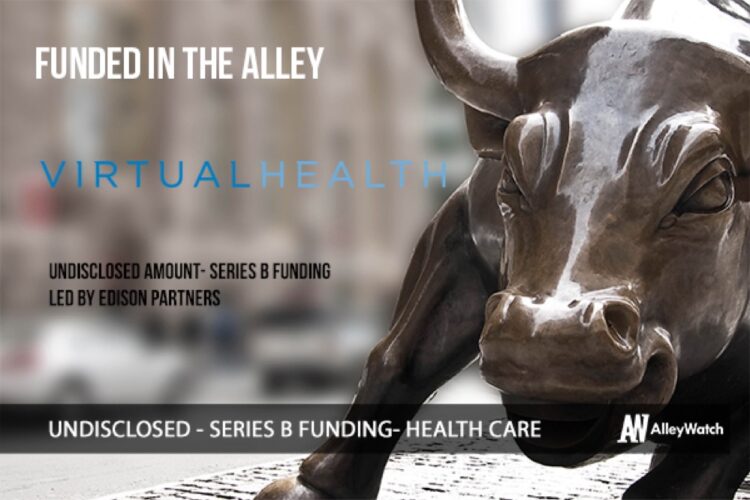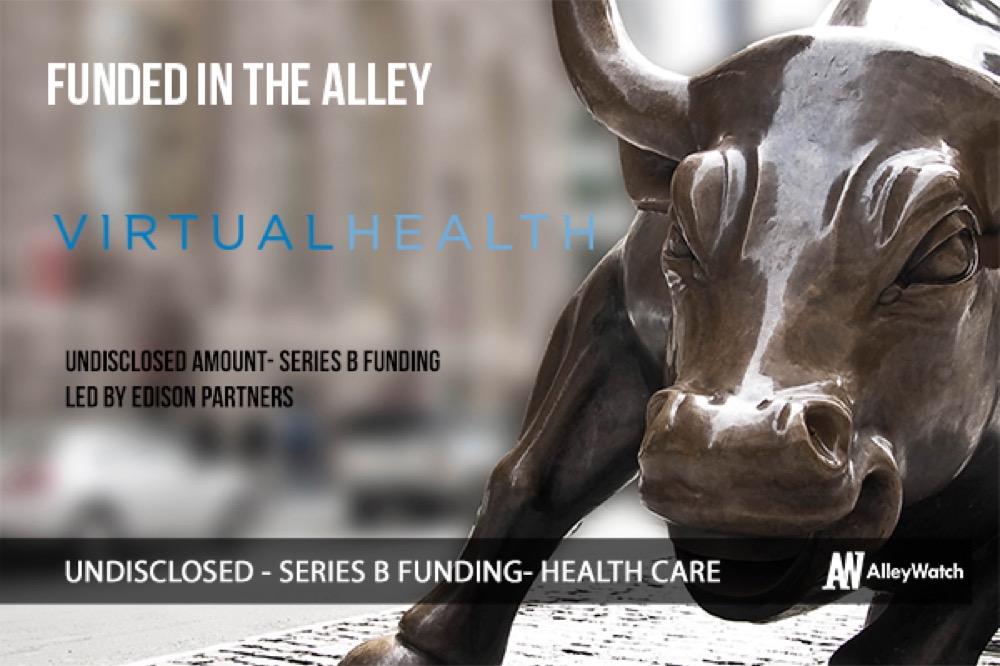Healthcare systems are notoriously backlogged with inefficiencies and miscommunication between patients, clinicians, and providers. Investors have taken notice and it’s no surprise that VirtualHealth’s Series B round was met with much anticipation and interest. The company’s flagship platform HELIOS has transformed the lives of 7 million patients. At its core, HELIOS integrates clinical, behavioral and social data streams into a single, complete patient view, which provides criticial insights to create forward-thinking, proactive solutions for the entire care continuum. The company, which was founded in 2012, declined to share the exact amount of this round but indicated that it has raised over $25M in total. According to SEC filings, the company previously raised $7M in 2017 and $2.55M in 2016, putting this round in the neighborhood of ~$15.45M+.
AlleyWatch caught up with founder and CEO Adam Sabloff to discuss the factors contributing to VirtualHealth’s growth, the company’s future plans, and latest round of funding.
Who were your investors and how much did you raise?
VirtualHealth closed a Series B financing round, bringing the total amount raised by the company to more than $25M.
 Tell us about the product or service that VirtualHealth offers.
Tell us about the product or service that VirtualHealth offers.
VirtualHealth’s flagship HELIOS platform was built specifically to support the goals of value-based reimbursement models within the payer market. HELIOS integrates clinical, behavioral and social data streams into a single, complete patient view and then combines real-time data with the most intelligent, automated, and responsive workflows to empower proactive interventions.
Today, HELIOS platform is revolutionizing care management for approximately 7 million patients. HELIOS advances VirtualHealth’s mission of improving a broken healthcare system for the nation’s highest-risk patient populations, including disabled, low-income, high risk, and elderly individuals.
What inspired you to start VirtualHealth?
The genesis of VirtualHealth started with my work in the mid-2000s. I was involved in the renaissance of the Inner Harbor in Baltimore, and a key part of our mission was to empower seniors moving into these new developments to have access to a great healthcare ecosystem. The goal was to use connected devices to make the home an organic extension of the healthcare system through real-time monitoring. These devices could measure key indicators like glucose levels, weight, and blood pressure. We saw tremendous promise in leveraging telehealth to monitor patients’ health and prevent expensive hospital visits. Most importantly, I realized that there was incredible potential for technology to bring about real change in healthcare. My subsequent loss of a loved one to a late-stage diagnosis only reaffirmed my dedication to bring about transformative change in healthcare.
How is VirtualHealth different?
From the beginning, VirtualHealth has differentiated itself by focusing on the unique challenges of caring for the most vulnerable, high-risk patient populations, many of whom are enrolled in government-sponsored health plans. The HELIOS platform was purpose-built to support whole-person care and align with the goals of value-based reimbursement models and is transforming care across Medicaid, Medicare, Commercial and long-term care patients. HELIOS integrates clinical, behavioral and social data streams into single, complete patient view and overlays highly configurable, intelligent workflows to ensure the right care is delivered to the right patient at the right time.
What market does VirtualHealth target and how big is it?
VirtualHealth targets many types of organizations, including health plans, health systems, and provider organizations, and health and behavioral service agencies. Quantifying our markets is tough because as value-based care contracts grow, so does our potential client base, but we can confidently say that there are well over a hundred million patients serviced by our clients and potential clients in the U.S.
What’s your business model?
It’s a SaaS-based model that is scalable in terms of both resources and pricing based on each client’s enterprise maturity and population size.
How has the business changed since we last spoke in 2017?
Over the past two years, VirtualHealth has experienced explosive customer and revenue growth, which led to the company being ranked number 39 on Deloitte’s 2018 Technology Fast 500, and within the top 10 in the Greater New York region. In 2018, we significantly ramped up our customer base, signing a number of large and innovative health plans including Community Care of North Carolina, Inc., WellCare Health Plans, Inc. and Chimes. We also partnered with Aunt Bertha in 2018 to establish a fully operational integration with their market leading social determinants of health search and referrals platform. This partnership equips our clients with real-time access to community resources that support patient needs. Finally, we moved forward with the next wave of innovation within the HELIOS platform, creating a design that is 80% configurable and introducing forward-thinking functionality such as fully integrated transportation scheduling that ensures clients do not miss appointments and receive optimal care.
What was the funding process like?
We were very fortunate to have interest from many firms – we had nearly 10 term sheets! In the end, we made the decision to move forward with our existing investors, including Edison Partners, as they have been champions of VirtualHealth for years and are fully aligned with our core mission.
What are the biggest challenges that you faced while raising capital?
The biggest challenge across the board was gaining traction in a highly regulated and understandably conservative industry. There was a fair amount of pushback on the possibility of new technologies being grafted successfully to legacy operational processes.
I vividly remember meeting with a very experienced healthcare VC firm that told us in no uncertain terms that our idea would not work because it did not easily fit any pre-existing industry archetype – it was not an EMR, it was not a claims processing system, it was not a patient portal, and so forth. Since our whole value proposition was to break down traditional healthcare silos it was particularly frustrating to hear that sort of feedback. Through everything, our belief that what we were doing was going to profoundly change people’s lives helped us persevere.
I vividly remember meeting with a very experienced healthcare VC firm that told us in no uncertain terms that our idea would not work because it did not easily fit any pre-existing industry archetype – it was not an EMR, it was not a claims processing system, it was not a patient portal, and so forth. Since our whole value proposition was to break down traditional healthcare silos it was particularly frustrating to hear that sort of feedback. Through everything, our belief that what we were doing was going to profoundly change people’s lives helped us persevere.
What factors about your business led your investors to write the check?
Our investors recognized that VirtualHealth is building technology that empowers improved access to, and delivery of, care to some of the nation’s most under-served and medically complex patient populations. We have been fortunate that the same investors who were involved in our Series A continue to support the company and chose to invest in our Series B round.
What are the milestones you plan to achieve in the next six months?
The explosive growth VirtualHealth has experienced over the past three years highlights the long-term benefits of focusing on operational fundamentals and responsible governance. Over the next six months, we will continue leveraging our previous successes as we develop new, more innovative ways to apply technology and analytics to advance care management.
One key area of focus is optimizing the use of social determinants of health to benefit healthcare’s highest risk patient populations. Our HELIOS platform features what we believe is the most advanced, forward-thinking approach to social determinants of health on the market. For example, we were the first in the market to close a critical care gap by supporting transportation needs through a unique advanced framework that enables scheduling of all trips, including recurring trips, without leaving the platform. This improves access to often overlooked but essential activities, like a patient’s ability to get to the doctor’s office and the pharmacy.
What advice can you offer companies in New York that do not have a fresh injection of capital in the bank?
Keep an eye on key financial and operational metrics and build for the long term – you never want to be in a position to constantly fundraise just to keep your company afloat. In our tech-enabled, transactional world fundamentals still matter.
Where do you see the company going now over the near term?
We will continue working to support the expansion of value-based care across both public and private markets. We expect that commercial payers will increasingly adopt this quality-based model, as it benefits both the payer and their patients. Our clients have demonstrated time and again how value-based models coupled with state-of-the-art technology can drive significant improvements in care outcomes that ultimately reduce overall costs.
Where is your favorite bar in the city for an after work drink?
That’s easy: Tarallucci E Vino near our offices, which provides the added benefit of phenomenal food to go with the drink.





